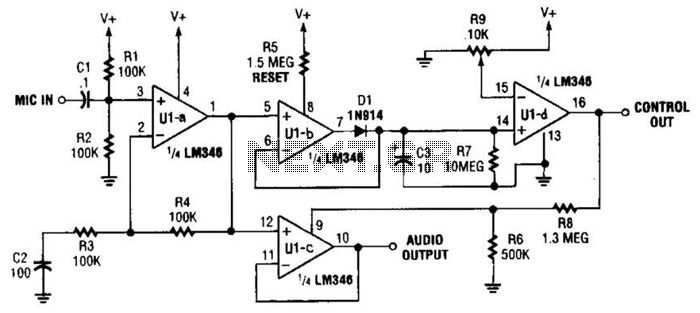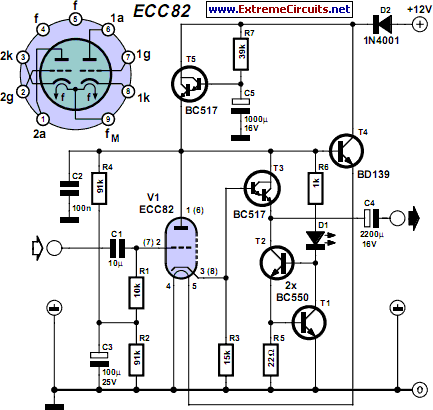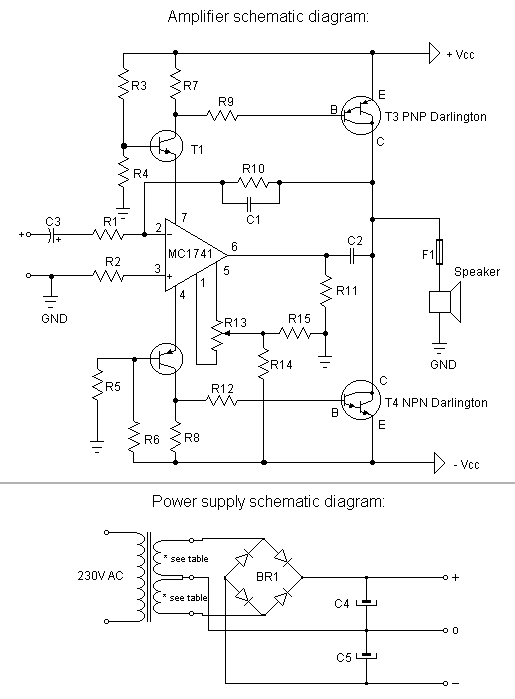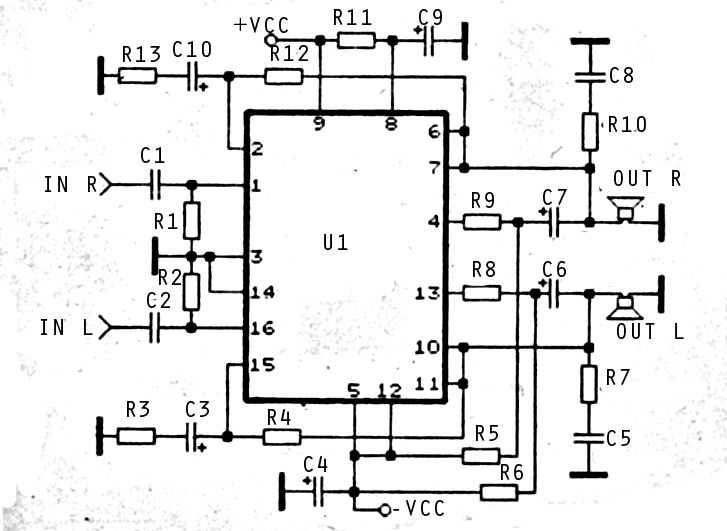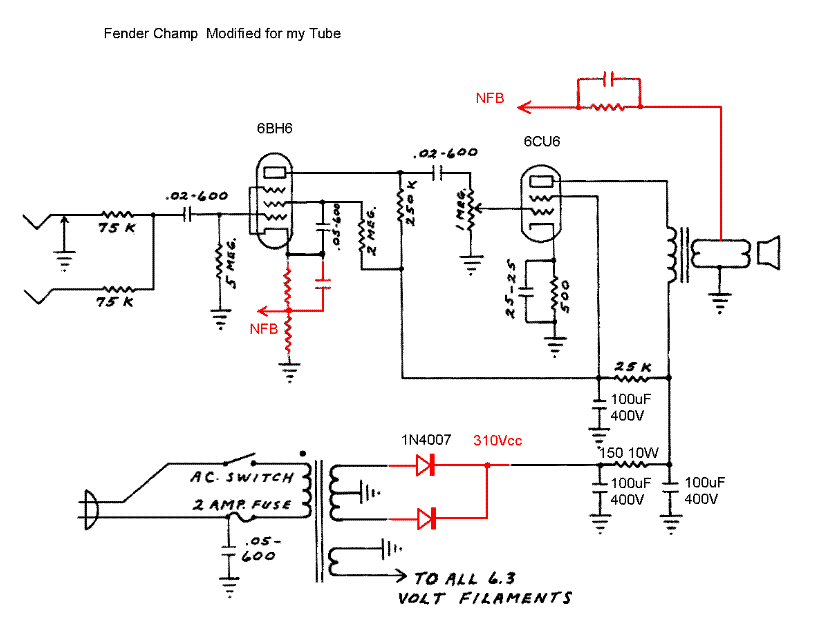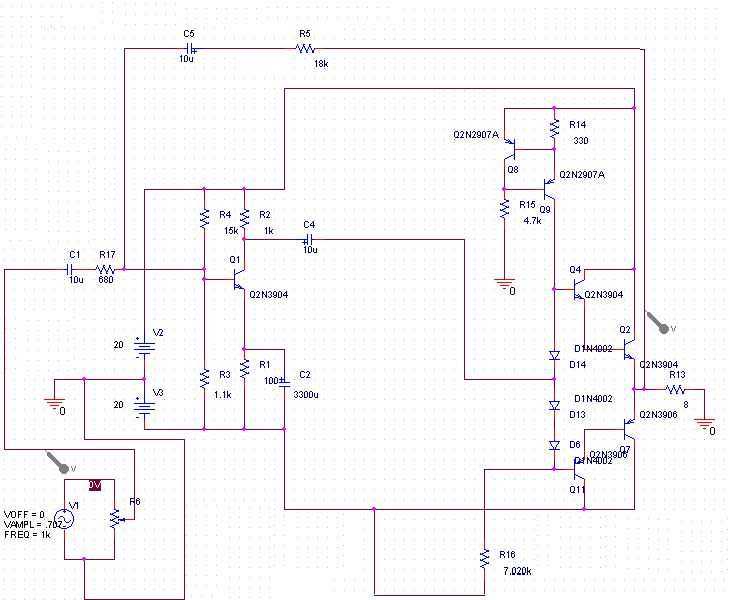
Operational amplifier
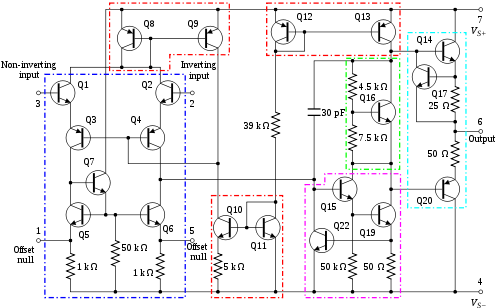
An operational amplifier, commonly referred to as an op-amp, is a DC-coupled high-gain electronic voltage amplifier featuring a differential input and typically a single-ended output. An op-amp generates an output voltage that is often millions of times larger than the voltage difference between its input terminals. The substantial gain of the op-amp is generally regulated by negative feedback, which predominantly influences the magnitude of its output ("closed-loop") voltage gain in amplifier applications or the necessary transfer function in analog computing. In the absence of negative feedback, and with potential positive feedback for regeneration, an op-amp functions primarily as a comparator. Key characteristics include high input impedance at the input terminals (ideally infinite) and low output impedance at the output terminal(s) (ideally zero). Op-amps are extensively utilized in various consumer, industrial, and scientific devices. Standard integrated circuit (IC) op-amps are available at low cost in moderate production volumes, while specialized operational amplifiers with unique performance specifications can exceed $100 in small quantities. Op-amps may exist as discrete components or as integrated circuit cells, which can be replicated multiple times on a single chip as part of a more complex device. The op-amp is a specific type of differential amplifier, with other variants including the fully differential amplifier (which has two outputs), the instrumentation amplifier (typically constructed from three op-amps), the isolation amplifier (similar to the instrumentation amplifier, but capable of handling common-mode voltages that would damage a standard op-amp), and negative feedback amplifiers (usually consisting of one or more op-amps and a resistive feedback network). Input and output pins may be labeled differently depending on the configuration, but their function remains consistent: to supply additional power for signal amplification. Often, these pins are omitted from diagrams for clarity, with the power configuration described or assumed from the circuit. The op-amp amplifies only the voltage difference between its two inputs, known as the differential input voltage. The output voltage is determined by the equation involving the voltage at the inverting terminal and the open-loop gain of the amplifier. The term open-loop signifies the lack of a feedback loop from the output to the input. In the absence of negative feedback, the op-amp behaves as a switch. The inverting input is maintained at ground (0 V) via a resistor; thus, if the voltage applied to the non-inverting input is positive, the output will reach its maximum positive value, while a negative input will drive the output to its maximum negative value. Without feedback from the output to the inputs, this configuration is classified as an open-loop circuit, with the gain equating to the open-loop gain of the op-amp. Introducing negative feedback through a resistor reduces the gain. Equilibrium occurs when the output voltage is sufficient to adjust the inverting input voltage to match the non-inverting input voltage. For instance, if the input voltage is 1 V and the feedback resistor equals the gain resistor, the output voltage will be 2 V to maintain the inverting input at 1 V. Due to the feedback from the resistor, this forms a closed-loop circuit, wherein the overall gain (output voltage/input voltage) is referred to as the closed-loop gain. Since the feedback is negative, the closed-loop gain is less than the open-loop gain of the op-amp. Minor input voltage variations can lead to amplifier saturation, causing the output voltage to reach either extreme maximum or minimum levels.
Operational amplifiers are integral components in various electronic circuits, serving functions such as signal amplification, filtering, and mathematical operations. The versatility of op-amps allows them to be configured in numerous ways to achieve desired outcomes in applications ranging from simple signal conditioning to complex analog computing tasks. In practical applications, op-amps can be configured in inverting, non-inverting, differential, integrator, and differentiator configurations, each serving unique purposes.
In an inverting configuration, the input signal is applied to the inverting terminal, while the non-inverting terminal is grounded. This configuration results in an output that is 180 degrees out of phase with the input and can be calculated using the formula Vout = - (Rf/Rin) * Vin, where Rf is the feedback resistor and Rin is the input resistor. Conversely, in a non-inverting configuration, the input signal is fed to the non-inverting terminal, yielding an output that is in phase with the input. The gain in this case can be expressed as Vout = (1 + Rf/Rin) * Vin.
Moreover, op-amps can be utilized in active filters, oscillators, and comparators, enhancing their utility in signal processing applications. The ability to integrate multiple op-amps on a single chip facilitates the design of compact and efficient electronic systems. The characteristics of high input impedance and low output impedance make op-amps suitable for interfacing with various signal sources and loads, ensuring minimal signal degradation.
In summary, operational amplifiers are foundational elements in modern electronics, characterized by their high gain, versatility, and adaptability in various circuit configurations, making them essential for a wide range of applications across different fields.An operational amplifier, which is often called an op-amp, is a DC - coupled high- gain electronic voltage amplifier with a differential input and, usually, a single-ended output. [1] An op-amp produces an output voltage that is typically millions of times larger than the voltage difference between its input terminals.
Typically the op-amp`s very large gain is controlled by negative feedback, which largely determines the magnitude of its output ("closed-loop") voltage gain in amplifier applications, or the transfer function required (in analog computers ). Without negative feedback, and perhaps with positive feedback for regeneration, an op-amp essentially acts as a comparator.
High input impedance at the input terminals (ideally infinite) and low output impedance at the output terminal(s) (ideally zero) are important typical characteristics. Op-amps are among the most widely used electronic devices today, being used in a vast array of consumer, industrial, and scientific devices.
Many standard IC op-amps cost only a few cents in moderate production volume; however some integrated or hybrid operational amplifiers with special performance specifications may cost over $100 US in small quantities. Op-amps sometimes come in the form of macroscopic components, (see photo) or as integrated circuit cells ; patterns that can be reprinted several times on one chip as part of a more complex device.
The op-amp is one type of differential amplifier. Other types of differential amplifier include the fully differential amplifier (similar to the op-amp, but with two outputs), the instrumentation amplifier (usually built from three op-amps), the isolation amplifier (similar to the instrumentation amplifier, but which works fine with common-mode voltages that would destroy an ordinary op-amp), and negative feedback amplifier (usually built from one or more op-amps and a resistive feedback network). ) can be labeled in different ways (See IC power supply pins ). Despite different labeling, the function remains the same ” to provide additional power for amplification of signal.
Often these pins are left out of the diagram for clarity, and the power configuration is described or assumed from the circuit. input, and ideally the op-amp amplifies only the difference in voltage between the two, which is called the differential input voltage.
The output voltage of the op-amp is given by the equation, is the voltage at the inverting terminal and Gopen-loop is the open-loop gain of the amplifier. (The term open-loop refers to the absence of a feedback loop from the output to the input. ) With no negative feedback, the op-amp acts as a switch. The inverting input is held at ground (0 V) by the resistor, so if the Vin applied to the non-inverting input is positive, the output will be maximum positive, and if Vin is negative, the output will be maximum negative.
Since there is no feedback from the output to either input, this is an open loop circuit. The circuit`s gain is just the Gopen-loop of the op-amp. Adding negative feedback via Rf reduces the gain. Equilibrium will be established when Vout is just sufficient to reach around and pull the inverting input to the same voltage as Vin. As a simple example, if Vin = 1 V and Rf = Rg, Vout will be 2 V, the amount required to keep V at 1 V.
Because of the feedback provided by Rf, this is a closed loop circuit. Its over-all gain Vout/Vin is called the closed-loop gain Gclosed-loop. Because the feedback is negative, in this case Gclosed-loop is less than the Gopen-loop of the op-amp. (a few microvolts or less) will result in amplifier saturation, where the output voltage goes to either the extreme maximum or minimum end of its range, which is set app
🔗 External reference
Operational amplifiers are integral components in various electronic circuits, serving functions such as signal amplification, filtering, and mathematical operations. The versatility of op-amps allows them to be configured in numerous ways to achieve desired outcomes in applications ranging from simple signal conditioning to complex analog computing tasks. In practical applications, op-amps can be configured in inverting, non-inverting, differential, integrator, and differentiator configurations, each serving unique purposes.
In an inverting configuration, the input signal is applied to the inverting terminal, while the non-inverting terminal is grounded. This configuration results in an output that is 180 degrees out of phase with the input and can be calculated using the formula Vout = - (Rf/Rin) * Vin, where Rf is the feedback resistor and Rin is the input resistor. Conversely, in a non-inverting configuration, the input signal is fed to the non-inverting terminal, yielding an output that is in phase with the input. The gain in this case can be expressed as Vout = (1 + Rf/Rin) * Vin.
Moreover, op-amps can be utilized in active filters, oscillators, and comparators, enhancing their utility in signal processing applications. The ability to integrate multiple op-amps on a single chip facilitates the design of compact and efficient electronic systems. The characteristics of high input impedance and low output impedance make op-amps suitable for interfacing with various signal sources and loads, ensuring minimal signal degradation.
In summary, operational amplifiers are foundational elements in modern electronics, characterized by their high gain, versatility, and adaptability in various circuit configurations, making them essential for a wide range of applications across different fields.An operational amplifier, which is often called an op-amp, is a DC - coupled high- gain electronic voltage amplifier with a differential input and, usually, a single-ended output. [1] An op-amp produces an output voltage that is typically millions of times larger than the voltage difference between its input terminals.
Typically the op-amp`s very large gain is controlled by negative feedback, which largely determines the magnitude of its output ("closed-loop") voltage gain in amplifier applications, or the transfer function required (in analog computers ). Without negative feedback, and perhaps with positive feedback for regeneration, an op-amp essentially acts as a comparator.
High input impedance at the input terminals (ideally infinite) and low output impedance at the output terminal(s) (ideally zero) are important typical characteristics. Op-amps are among the most widely used electronic devices today, being used in a vast array of consumer, industrial, and scientific devices.
Many standard IC op-amps cost only a few cents in moderate production volume; however some integrated or hybrid operational amplifiers with special performance specifications may cost over $100 US in small quantities. Op-amps sometimes come in the form of macroscopic components, (see photo) or as integrated circuit cells ; patterns that can be reprinted several times on one chip as part of a more complex device.
The op-amp is one type of differential amplifier. Other types of differential amplifier include the fully differential amplifier (similar to the op-amp, but with two outputs), the instrumentation amplifier (usually built from three op-amps), the isolation amplifier (similar to the instrumentation amplifier, but which works fine with common-mode voltages that would destroy an ordinary op-amp), and negative feedback amplifier (usually built from one or more op-amps and a resistive feedback network). ) can be labeled in different ways (See IC power supply pins ). Despite different labeling, the function remains the same ” to provide additional power for amplification of signal.
Often these pins are left out of the diagram for clarity, and the power configuration is described or assumed from the circuit. input, and ideally the op-amp amplifies only the difference in voltage between the two, which is called the differential input voltage.
The output voltage of the op-amp is given by the equation, is the voltage at the inverting terminal and Gopen-loop is the open-loop gain of the amplifier. (The term open-loop refers to the absence of a feedback loop from the output to the input. ) With no negative feedback, the op-amp acts as a switch. The inverting input is held at ground (0 V) by the resistor, so if the Vin applied to the non-inverting input is positive, the output will be maximum positive, and if Vin is negative, the output will be maximum negative.
Since there is no feedback from the output to either input, this is an open loop circuit. The circuit`s gain is just the Gopen-loop of the op-amp. Adding negative feedback via Rf reduces the gain. Equilibrium will be established when Vout is just sufficient to reach around and pull the inverting input to the same voltage as Vin. As a simple example, if Vin = 1 V and Rf = Rg, Vout will be 2 V, the amount required to keep V at 1 V.
Because of the feedback provided by Rf, this is a closed loop circuit. Its over-all gain Vout/Vin is called the closed-loop gain Gclosed-loop. Because the feedback is negative, in this case Gclosed-loop is less than the Gopen-loop of the op-amp. (a few microvolts or less) will result in amplifier saturation, where the output voltage goes to either the extreme maximum or minimum end of its range, which is set app
🔗 External reference
